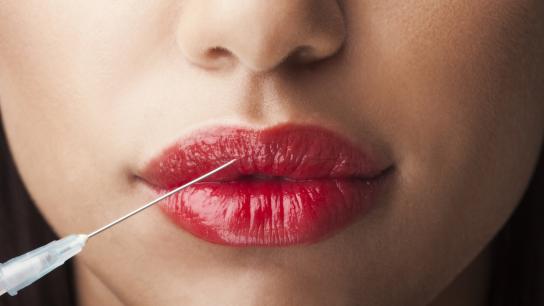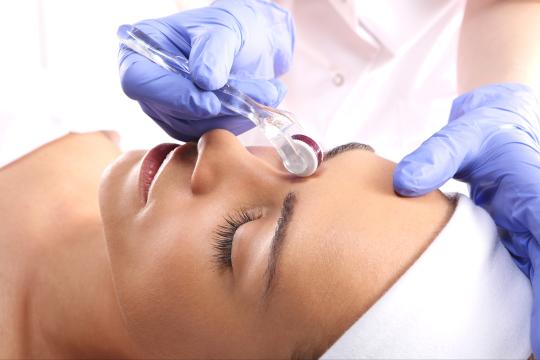
So you want a puffier, pouffier, pout? Maybe you just want to replace the loss of volume or the natural lip line of a kisser that’s seen too many years of smooching, smoking or smirking. Whatever the reason, you’re not alone. Since most of us enjoy the good fortune of getting older, we also get to experience the loss of lip volume and definition that comes with advancing years. One of the basic symptoms of aging is loss of lip volume and definition, which leads to a lot of curiosity when it comes to lip filler and augmentations. So let’s fill that information void, with a little help from board-certified plastic surgeon Dr. Brent Moelleken . We’re going to take a look at the three most requested filler and augmentation procedures to plump up those two lovely and exposed erogenous zones that live just below the nose on your face… your lips.
Despite the easy-peasy popularity of lip filler, this procedure is not a one-size fits all answer to a fuller pout. Oh, sure… it works. But there are variables (and other options) that must be considered before you decide to get injected.
All fillers aren’t created equal.
It’s important to understand how a particular filler works and why your doctor or practitioner is recommending a specific product to you. Certain fillers have a softer finish to them, while others have a firmer feel—some are great at defining and building, while others are better suited to fluffing and puffing (i.e. not the technical term)—which type is best for you will depend on the desired outcome and what part of the lip needs plumping.
“There are many different places on the lip they can be injected,” explains Dr. Moelleken, “including the white roll, vermillion border, and mucosa, depending on lip dimensions and the desired effect.” And thanks to the advances in today’s fillers and injection techniques, those seeking lip injections aren’t doomed to sport the “trout pouts” of the past.
My long-winded point here is that not all fillers are created equal, and some are simply better at dealing with defining a lip line, or fattening an area than others. Be sure you understand what you’re being injected with. And for god's sake, if anyone suggests injecting you with silicone - run.
How long will it last?
It’s also important to understand that the most popular fillers have the same pro as they do con: they don’t last forever. The pro is that, should you decide you miss your former lips, you can get them back. The con? Temporary fillers are… uh… temporary. Which means you’ll have to get touch-ups to maintain your results. “While the fillers commonly used for lips—Juvederm, Belotero, Restylane, etc.—last about six to eight months, some patients may start to notice they need a fill-up after five months,” advises Dr. Moelleken. “When the lips start to look thinner than the patient wants, then it’s time to consider another trip to their plastic surgeon.” *Sigh.
What should you expect?
Finally, we get to what you might expect after you’ve decided to have filler injected into your lips. Your plastic surgeon or practitioner will start by applying a numbing cream to numb the lip area (let’s not forget how sensitive your lips are, people). Thankfully most modern fillers also contain lidocaine (a numbing medicine) which, according to Dr. Moelleken, makes the pain “quite bearable.” Of course, we’ll let you be the judge of that. The filler will be injected into the lip with the precision that comes only with proper training and experience. That last bit is important. The only person who should be getting near you with a needle full of filler is your doctor or a highly skilled practitioner working under your doctors supervision. Injections are a delicate business, and only someone qualified will know exactly where, how much, and how deep filler injections should go to ensure that side effects are minimal.
Side effects
You may experience swelling, bruising or unevenness for a day or two, but typically the side effects are minimal and the results are fairly immediate. Your doctor will generally advise that you not seek out any touch-up procedures until all of the swelling has gone—typically about a week.
Other options?
For those looking for a less temporary solution, some doctors may suggest fat injections. And, yes, they’re exactly what they sounds like. Your plastic surgeon uses liposuction to obtain fat from other areas of the body. The fat is then injected into your lips. Dr. Moelleken advises caution when considering this route. “While some of the fat [obtained] is viable and will probably survive, much or most of the fat is nonviable [traumatised] so it is often reabsorbed with time,” he says. This can produce results that are lumpy, uneven and even results that are simply reabsorbed with time. Bye-bye lips.
“In our practice,” explains Dr. Moelleken, “grafts are made of fat and fascia obtained from the patient’s own tissues. These are not traumatized and usually obtained from the lower abdomen/pubic area through a small incision.” And is it permanent? “These grafts are typically permanent and do not require overfilling. It can be placed very precisely by creating a precise pocket into which the graft is placed,” says Dr. Moelleken, suggesting that this process might be a good answer to those looking for a more permanent solution to thin and/or thinning lips.
So there you have it, the very basics on filling a failing lip line or thickening a too-thin pout. Research wise, it’s just the tip of the iceberg—but it’s certainly enough to arm yourself with in preparation for a consultation with your plastic surgeon, who, let’s face it, is really the only person qualified to help you decide which option is right for you.







